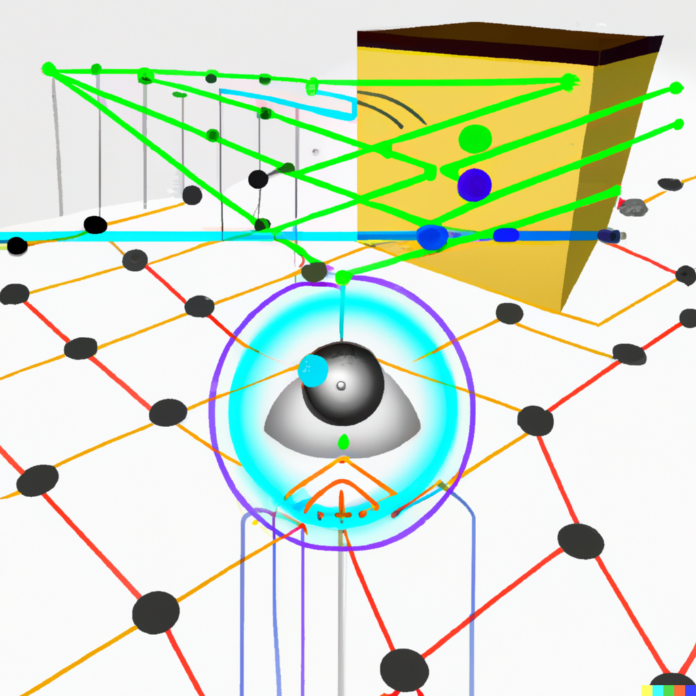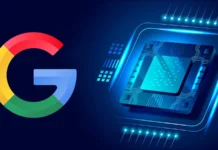What is Sensor
Sensors are devices that detect and respond to physical or environmental changes and generate an electrical signal or a similar output. They play an important role in various applications including automation, control systems, and sensing environments.
Types of Sensors include:
- Temperature sensors: These measure the temperature and provide a voltage or resistance proportional to the temperature.
- Light sensors: These measure the amount of light and generate a current or voltage proportional to the light level.
- Motion sensors: These detect movement and provide an output indicating the presence of motion.
- Pressure sensors: These measure pressure and provide an electrical output proportional to the pressure.
- Proximity sensors: These detect the presence of an object nearby and provide an output indicating the presence of an object.
- Humidity sensors: These measure the moisture content in the air and provide an electrical output proportional to the humidity.
- Magnetic sensors: These detect magnetic fields and provide an output indicating the presence of a magnetic field.
- Gas sensors: These detect the presence of various gases and provide an electrical output proportional to the gas concentration.
The sensor uses in Home devices
Sensors play a significant role in many home devices and have numerous applications, including:
- Smart Thermostats – use temperature sensors to measure and regulate the temperature in a home, making it more energy efficient.
- Smart Lighting – use motion sensors to turn lights on and off automatically based on occupancy and light sensors to adjust the brightness based on natural light levels.
- Home Security Systems – use motion sensors, door and window sensors, and cameras to detect and alert homeowners of intrusions or security breaches.
- Smart Locks – use proximity sensors to unlock doors automatically when a user is within range, and biometric sensors for identification.
- Smart Appliances – use sensors to monitor and regulate temperature, humidity, and usage patterns for appliances such as refrigerators, washing machines, and ovens.
- Smart Home Entertainment Systems – use sensors and remote controls to control home entertainment systems such as TVs, sound systems, and gaming devices.
- Environmental Monitoring – uses air quality sensors to monitor indoor air pollution, humidity sensors to measure and regulate relative humidity levels, and water sensors to detect and prevent water leaks.
Sensors in-home devices allow for increased automation, improved energy efficiency, enhanced safety, and convenience.
Sensors uses in Daily Life
Overall, sensors play a crucial role in a wide range of applications, from industrial process control to consumer devices. The selection of the right sensor depends on the specific requirements of the application and the desired level of accuracy, reliability, and cost.
Sensors play a vital role in many aspects of our daily lives, here are a few examples:
- Automotive: Sensors are used in vehicles for various purposes such as monitoring the engine performance, detecting the presence of passengers, and controlling the airbags.
- Smart homes: Sensors are used in smart homes for temperature control, lighting, and security. For example, occupancy sensors detect the presence of people and automatically adjust the lights and temperature.
- Health and fitness: Sensors are used in wearable devices such as fitness trackers to monitor heart rate, step count, and sleep patterns.
- Mobile devices: Sensors are used in smartphones and tablets for various purposes such as touch input, orientation sensing, and proximity sensing.
- Environmental monitoring: Sensors are used to monitor air and water quality, soil moisture, and other environmental parameters.
- Industrial automation: Sensors are used in industrial processes for monitoring and control, such as measuring pressure, temperature, and flow.
- Agriculture: Sensors are used in precision agriculture for monitoring soil moisture, temperature, and plant growth.
These are just a few examples of the many ways that sensors are used in our daily lives. The increasing use of sensors in various applications is contributing to the development of the Internet of Things (IoT), which is connecting more and more devices to the internet and enabling new levels of automation and efficiency.
The sensor uses in AI Technologies
Sensors play a critical role in many Artificial Intelligence (AI) applications, here are a few examples:
- Robotics: Sensors are used in robots to perceive their surroundings, perform tasks, and avoid obstacles. For example, cameras and LiDAR sensors are used to generate 3D maps of environments, while tactile sensors are used to detect touch and pressure.
- Image recognition: Sensors such as cameras and depth sensors are used in computer vision systems to detect and recognize objects, faces, and gestures.
- Natural language processing: Sensors such as microphones are used in speech recognition systems to convert speech to text and enable voice-based interaction with devices.
- Autonomous vehicles: Sensors such as cameras, LiDAR, radar, and GPS are used in autonomous vehicles to perceive their surroundings and make driving decisions.
- Industrial automation: Sensors are used in AI-powered industrial automation systems for monitoring and control, such as detecting anomalies in manufacturing processes and predicting maintenance needs.
- Healthcare: Sensors such as wearable devices and medical sensors are used in AI-powered healthcare systems to monitor vital signs, diagnose diseases, and predict patient outcomes.
These are just a few examples of the many ways that sensors are used in AI applications. The combination of sensors and AI is enabling new levels of automation and intelligence in various industries and transforming the way we live and work.
Advantages of sensors
Sensors have several advantages, including:
- Improved accuracy: Sensors can provide precise and accurate data, reducing the risk of human error and enabling more effective decision-making.
- Increased efficiency: Sensors can automate repetitive tasks and reduce the time and effort required to perform them, increasing productivity and efficiency.
- Real-time monitoring: Sensors can continuously monitor physical conditions and provide real-time data, allowing for prompt action in response to changing conditions.
- Enhanced safety: Sensors can be used to detect hazardous conditions and trigger alerts or automatic responses to prevent accidents and protect people and property.
- Remote monitoring: Sensors can transmit data over long distances, enabling remote monitoring and control of physical conditions and processes.
- Cost savings: By automating tasks and reducing the need for manual labor, sensors can help to reduce costs and increase profitability.
- Improved customer experience: Sensors can be used to enhance the customer experience by providing real-time information, improving communication, and enabling more personalized experiences.
- Enabling new technologies: Sensors are a key component in many emerging technologies such as the Internet of Things (IoT), robotics, and autonomous systems, enabling new levels of automation and intelligence.
Disadvantages of Sensors
Sensors have some disadvantages, including:
- Cost: Sensors can be expensive, especially high-end sensors with advanced features.
- Complexity: Some sensors require specialized knowledge and technical expertise to install, configure, and use effectively.
- Maintenance: Sensors can require regular maintenance and calibration to ensure they continue to function correctly.
- Power consumption: Some sensors can consume significant amounts of power, making them less suitable for battery-powered applications or those with limited power supplies.
- Interference: Sensors can be affected by environmental conditions, such as temperature, humidity, electromagnetic interference, or physical obstructions, reducing their accuracy or causing them to fail.
- Data quality: Sensors can generate large amounts of data, some of which may be irrelevant or incorrect. This can create challenges for data processing, storage, and analysis.
- Privacy and security: Sensors can collect sensitive personal data, raising privacy and security concerns, particularly in applications such as surveillance, health monitoring, and financial transactions.
- Technical limitations: Some sensors have technical limitations, such as limited accuracy, range, or data processing capabilities, that can impact their performance and effectiveness.
FAQ’s
Here are some frequently asked questions (FAQs) about sensors:
What are sensors?
Sensors are devices that convert physical quantities, such as light, temperature, sound, or motion, into electrical signals that can be processed by a computer or other control system.
How do sensors work?
Sensors work by measuring a physical property, such as temperature or pressure, and converting it into an electrical signal. The electrical signal is then processed and analyzed to determine the value of the physical property.
What are the different types of sensors?
There are many different types of sensors, including temperature sensors, pressure sensors, motion sensors, light sensors, sound sensors, and proximity sensors, among others.
What are the advantages of sensors?
Sensors provide improved accuracy, increased efficiency, real-time monitoring, enhanced safety, remote monitoring, cost savings, improved customer experiences, and enable new technologies.
What are the disadvantages of sensors?
Sensors have some disadvantages, including cost, complexity, maintenance, power consumption, interference, data quality, privacy and security, and technical limitations.
What are the applications of sensors?
Sensors are used in a wide range of applications, including automotive, industrial, healthcare, environmental monitoring, security and surveillance, and consumer electronics, among others.
How can I choose the right sensor for my application?
To choose the right sensor for your application, you should consider factors such as the type of physical property you want to measure, the accuracy and range required, the cost, the power consumption, and the data processing capabilities, among others.
What is the Internet of Things (IoT) and how does it relate to sensors?
The Internet of Things (IoT) is a network of physical devices, vehicles, home appliances, and other items embedded with electronics, software, sensors, and connectivity which enables these objects to connect and exchange data. Sensors play a crucial role in the IoT, by collecting data and transmitting it to other devices for analysis and control.
Conclusion
sensors are important devices that play a vital role in many industries and applications, including healthcare, automotive, industrial, security and surveillance, and consumer electronics, among others. Sensors have many advantages, including improved accuracy, increased efficiency, real-time monitoring, enhanced safety, and cost savings. However, they also have some disadvantages, such as cost, complexity, maintenance, power consumption, and privacy and security concerns. When choosing the right sensor for your application, it is important to consider factors such as the type of physical property you want to measure, the accuracy and range required, and the data processing capabilities, among others.











